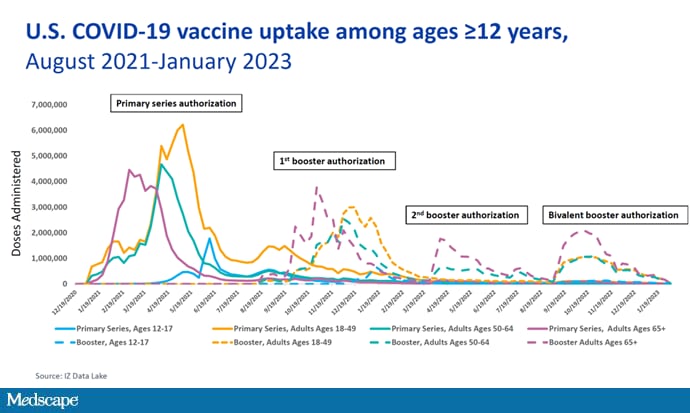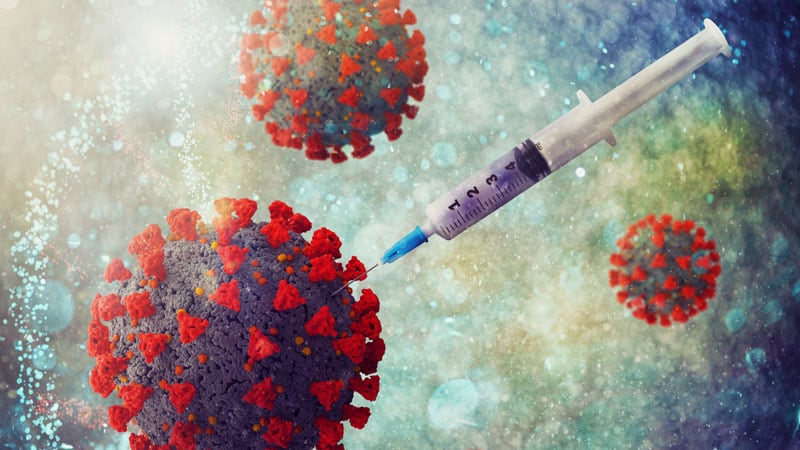- Joined
- Jun 8, 2008
- Messages
- 54,238
"

Enrollment into a small trial of nirmatrelvir/ritonavir (Paxlovid) for long COVID -- one that previously garnered attention for investigators not wearing masksopens in a new tab or window -- has been stopped early after an interim analysis, Stanford University confirmed to MedPage Today.
Two sources familiar with the STOP-PASC studyopens in a new tab or window told MedPage Today that trial enrollment had been halted. One was told by a study coordinator that a preliminary review found "inconclusive evidence" for the primary outcome of the study. Another said their first appointment was canceled just a few days before it was supposed to take place, and they were later told that all future enrollment had been halted.
"I've had neurological long COVID for more than 2 years and this was the first time I had an opportunity to participate in a trial testing a potential drug therapy," the participant whose visit was canceled told MedPage Today. "I was so eager to give it a try, I spent money from my dwindling savings account to pay for [my] trips."
Stanford Medicine spokesperson Lisa Kim confirmed that "new enrollment is closing slightly earlier than original projections based on a planned interim analysis reviewed by an external monitoring committee."
"There are no safety concerns with the study and enrolled participants are encouraged to complete follow-up activities as planned," she added.
Kim did not provide further comment on what was found during the interim analysis and did not comment on the "inconclusive" results mentioned by the study coordinator to the source.
In May, MedPage Today reportedopens in a new tab or window that some participants were concerned that some investigators were not wearing masks during clinic visits, potentially putting the participants at risk.
According to ClinicalTrials.govopens in a new tab or window, the study design specified two-way masking, for both investigators and participants. Neither Stanford nor study sponsor Pfizer would comment on whether or not the masking issue factored into the decision to stop the study early.
Pfizer spokesperson Jerica Pitts said Pfizer "funded the study and provided clinical supplies of Paxlovid and the placebo comparator at no cost." She also confirmed that new enrollment is closed at this time, "and the investigators plan to share final results as soon as the study is completed. We look forward to reviewing these results once available and will use the insights gathered to help inform planned and future studies."
STOP-PASC is a phase II study that sought to enroll 200 participants. It is not clear how many enrolled before recruitment closed.
Participants would receive a 15-day course of either nirmatrelvir/ritonavir or placebo plus ritonavir. Stanford and Pfizer did not comment on why the placebo group also received a protease inhibitor.
The study called for five patient visits over a total of 15 weeks, with the therapy or placebo given for the first 15 days. The estimated completion date was November 2023, according to ClinicalTrials.gov. The study's primary outcome is the difference at 10 weeks between the nirmatrelvir/ritonavir and placebo arms for any of six core symptoms of post-acute sequelae SARS-CoV-2 infection, or PASC: "fatigue, brain fog, dyspnea, body aches, gastrointestinal symptoms, cardiovascular symptoms."
Stanford spokesperson Kim said the results of the STOP-PASC trial "will be shared as soon as the study is completed," and that the study should be published "sometime before the end of the year" but that there is no definite timeline.
ClinicalTrials.gov currently lists the status of the study incorrectly as "recruiting."
Stanford Study of Paxlovid for Long COVID Stopped Early
— Enrollment was halted earlier than planned after interim analysis
by Kristina Fiore, Director of Enterprise & Investigative Reporting, MedPage Today
Enrollment into a small trial of nirmatrelvir/ritonavir (Paxlovid) for long COVID -- one that previously garnered attention for investigators not wearing masksopens in a new tab or window -- has been stopped early after an interim analysis, Stanford University confirmed to MedPage Today.
Two sources familiar with the STOP-PASC studyopens in a new tab or window told MedPage Today that trial enrollment had been halted. One was told by a study coordinator that a preliminary review found "inconclusive evidence" for the primary outcome of the study. Another said their first appointment was canceled just a few days before it was supposed to take place, and they were later told that all future enrollment had been halted.
"I've had neurological long COVID for more than 2 years and this was the first time I had an opportunity to participate in a trial testing a potential drug therapy," the participant whose visit was canceled told MedPage Today. "I was so eager to give it a try, I spent money from my dwindling savings account to pay for [my] trips."
Stanford Medicine spokesperson Lisa Kim confirmed that "new enrollment is closing slightly earlier than original projections based on a planned interim analysis reviewed by an external monitoring committee."
"There are no safety concerns with the study and enrolled participants are encouraged to complete follow-up activities as planned," she added.
Kim did not provide further comment on what was found during the interim analysis and did not comment on the "inconclusive" results mentioned by the study coordinator to the source.
In May, MedPage Today reportedopens in a new tab or window that some participants were concerned that some investigators were not wearing masks during clinic visits, potentially putting the participants at risk.
According to ClinicalTrials.govopens in a new tab or window, the study design specified two-way masking, for both investigators and participants. Neither Stanford nor study sponsor Pfizer would comment on whether or not the masking issue factored into the decision to stop the study early.
Pfizer spokesperson Jerica Pitts said Pfizer "funded the study and provided clinical supplies of Paxlovid and the placebo comparator at no cost." She also confirmed that new enrollment is closed at this time, "and the investigators plan to share final results as soon as the study is completed. We look forward to reviewing these results once available and will use the insights gathered to help inform planned and future studies."
STOP-PASC is a phase II study that sought to enroll 200 participants. It is not clear how many enrolled before recruitment closed.
Participants would receive a 15-day course of either nirmatrelvir/ritonavir or placebo plus ritonavir. Stanford and Pfizer did not comment on why the placebo group also received a protease inhibitor.
The study called for five patient visits over a total of 15 weeks, with the therapy or placebo given for the first 15 days. The estimated completion date was November 2023, according to ClinicalTrials.gov. The study's primary outcome is the difference at 10 weeks between the nirmatrelvir/ritonavir and placebo arms for any of six core symptoms of post-acute sequelae SARS-CoV-2 infection, or PASC: "fatigue, brain fog, dyspnea, body aches, gastrointestinal symptoms, cardiovascular symptoms."
Stanford spokesperson Kim said the results of the STOP-PASC trial "will be shared as soon as the study is completed," and that the study should be published "sometime before the end of the year" but that there is no definite timeline.
ClinicalTrials.gov currently lists the status of the study incorrectly as "recruiting."
-
![author['full_name'] author['full_name']](https://clf1.medpagetoday.com/media/images/author/kristinaFiore_188.jpg)
Kristina Fiore leads MedPage’s enterprise & investigative reporting team. She’s been a medical journalist for more than a decade and her work has been recognized by Barlett & Steele, AHCJ, SABEW, and others. Send story tips to [email protected].
"






















300x240.png)